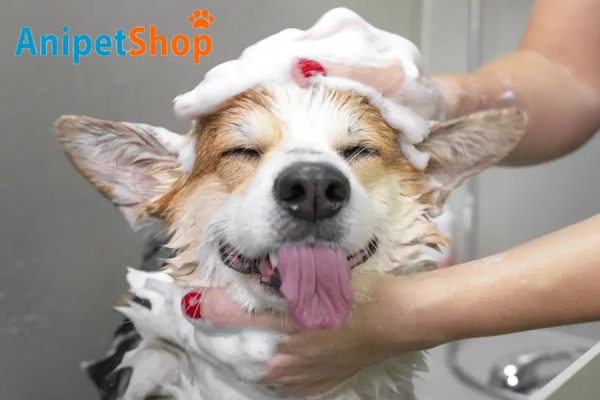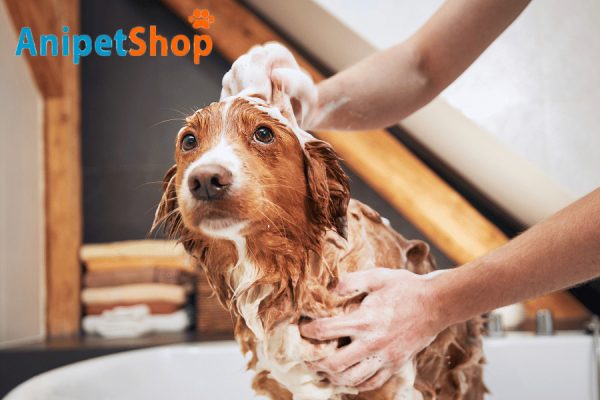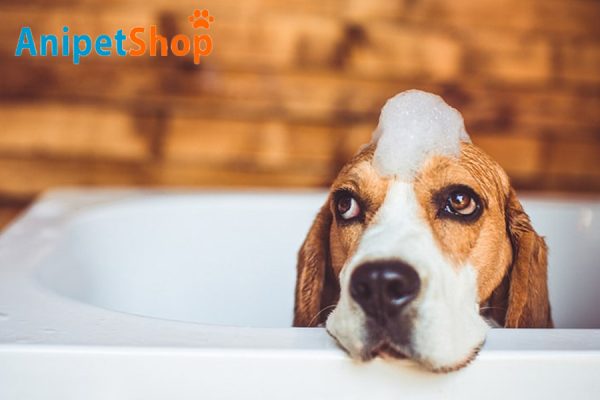How Often Should You Bathe Your Dog? A Comprehensive Guide
The frequency with which you should bathe your dog depends on a variety of factors, including their breed, skin type, coat length, activity level, and even the environment they live in. This tailored approach ensures that each dog receives care that’s not only effective but also beneficial for their specific needs. By understanding and respecting these nuances, dog owners can avoid the pitfalls of a one-size-fits-all bathing schedule, ensuring their pet’s skin and coat remain healthy.
Proper bathing has numerous advantages for both dogs and their owners. A clean coat keeps your dog looking great, feels softer, and smells better, enhancing the bond between pet and owner. Regular baths help to remove dirt, debris, and excess oil, potentially reducing skin irritations and improving overall skin health. Under-bathing can lead to odor buildup and skin infections, as dirt accumulates and irritates the skin. Conversely, over-bathing can strip away essential oils, leading to dry, itchy, and flaky skin.

Key Factors Determining Your Dog’s Bathing Needs
Let’s explore four key factors that determine the ideal bathing frequency for your dog, ensuring you provide the best care tailored to their unique needs.
#1 Coat Type
A dog’s coat type is a key factor in determining their bathing frequency. Here’s a breakdown:
- Short-haired dogs (e.g., Beagles, Boxers) typically need baths every 1-3 months, as their sleek coats don’t trap dirt easily.
- Long-haired breeds (e.g., Shih Tzus, Collies, Afghan Hounds) require more frequent grooming, ideally every 4-6 weeks, to prevent tangles and matting in their luxurious fur.
- Double-coated canines (e.g., Huskies, Golden Retrievers) should be bathed sparingly, around every 2-3 months, to preserve the insulating oils in their dense undercoats. However, they benefit from regular brushing to manage shedding.
- Oily-coated pups (e.g., Basset Hounds, Cocker Spaniels) might need more frequent baths, every 3-4 weeks, to control odor and prevent skin issues.
- Dogs with dry coats (e.g., Chihuahuas, Greyhounds) should be bathed less often, around every 2-3 months, to avoid stripping their skin of essential oils.

#2 Activity Level
A dog’s activity level plays a significant role in how often they need a bath. Energetic pups who love to romp outdoors, embark on hikes, or explore new terrain are more prone to getting dirty. Regular baths, perhaps every few weeks, are essential for these adventurous canines to remove grime, pollen, parasites, and other irritants that can lead to skin problems or discomfort.
On the other paw, dogs with a more laid-back lifestyle who primarily spend their time indoors typically stay cleaner and may only need baths every few months. For these indoor companions, excessive bathing can strip their skin and coat of natural oils, leading to dryness, itchiness, and irritation.

#3 Skin Conditions
Skin health plays a crucial role in determining your dog’s ideal bathing frequency. Different skin conditions require different approaches to bathing to maintain a healthy coat and skin barrier.
- Allergies: Dogs with allergies often benefit from more frequent bathing with a veterinarian-recommended hypoallergenic shampoo. This helps remove environmental allergens like pollen and dust mites from their fur, which can trigger itching, redness, and discomfort.
- Dry Skin: For dogs with dry, flaky skin, using a gentle, moisturizing shampoo and conditioner can help replenish essential oils and hydrate their skin. However, it’s important to avoid over-bathing, as this can further strip the skin of its natural moisture.
- Other Skin Conditions: A variety of other skin conditions, such as bacterial or fungal infections, hot spots, or seborrhea, can also impact your dog’s bathing needs. In some cases, more frequent baths with medicated shampoos may be necessary to manage the condition, while in others, less frequent bathing might be advised to avoid exacerbating dryness or irritation.

#4 Climate and Season
Climate and seasonal changes can also dictate how often a dog should be bathed. For instance, during periods of heavy shedding, which often occur in the transitions between seasons, more frequent baths can help manage loose fur and maintain skin health. This is especially true in spring and fall when many breeds shed their seasonal coats. Additionally, dogs living in humid climates may require more regular bathing to prevent moisture-related skin issues, such as yeast infections, which thrive in damp conditions.

General Bathing Frequency Guidelines
While general guidelines can serve as a starting point, the ideal bathing frequency for each dog should be personalized based on the factors discussed above, such as coat type, activity level, skin conditions, and the local climate.
General Guideline Ranges for Dog Bathing:
- Low Activity, Indoor Dogs: For dogs that spend most of their time indoors and have minimal outdoor exposure, bathing every 6-10 weeks may be adequate.
- Active, Outdoor Dogs: Dogs that are regularly active outdoors, especially those that play in mud or water, might need bathing every 4-6 weeks.
- Dogs with Oily Coats: Breeds with naturally oily coats, such as Labrador Retrievers, may require more frequent bathing, around every 4 weeks, to manage oiliness and prevent odor.
- Dogs with Dry or Sensitive Skin: For breeds prone to dry skin or those with sensitive skin, extending the time between baths (every 8-12 weeks) and using moisturizing or medicated shampoos can be beneficial.
- Seasonal Considerations: During times of increased shedding or when allergens are particularly high (like pollen season), increasing the frequency of baths can help manage these conditions.
It’s important to recognize that these guidelines are not one-size-fits-all. Some dogs may need even less frequent baths, especially those with naturally dry skin or those who lead predominantly indoor lifestyles with minimal exposure to dirt and allergens. On the other hand, dogs with specific skin conditions or those who frequently get dirty may require more frequent bathing.

Signs of Your Dog Over-Bathing
Over-bathing can disrupt the delicate balance of your dog’s skin, leading to a variety of issues:
- Skin Dryness and Irritation:
Overbathed dogs may exhibit flaky skin similar to dandruff, or you might notice redness and inflammation. This irritation can result from the depletion of oils that protect the skin’s barrier, leading to increased sensitivity and a higher susceptibility to infections or allergens.
- Coat Dullness and Breakage:
A healthy dog’s coat should be glossy and resilient, but over-bathing can strip the fur of its natural oils, resulting in a dull and brittle coat. This may be particularly noticeable in breeds with longer hair, where the natural luster is more pronounced when the coat is healthy.
- Behavioral Changes:
Dogs that are bathed too frequently may begin to exhibit stress behaviors around bath time. This could include hiding, whining, or showing signs of anxiety when they anticipate a bath. An aversion to bathing can lead to a stressful experience for both the dog and the owner.

Signs Your Dog Needs a Bath
Here are the signs that will let you know when it’s time to give your dog a bath, ensuring they stay clean and comfortable:
- Excessive Scratching: Constant scratching is often a sign that your dog’s skin may be irritated by dirt or parasites and needs cleansing.
- Greasy Coat: A noticeable buildup of oils can leave your dog’s coat feeling greasy, indicating a need for a bath to remove excess sebum.
- Visible Dirt/Debris: If you can see dirt, mud, or debris in your dog’s fur, it’s time for a cleaning.
- Dandruff Flakes: Similar to humans, dogs can get dandruff, which appears as white flakes on their skin, and a bath may help to remove these flakes.
- Matting: Dogs with longer hair can develop mats that are hard to brush out; bathing with a conditioner might help to untangle these mats.
When you notice signs such as excessive scratching, a greasy coat, visible dirt, dandruff flakes, or matting, it’s clear that your dog requires a bath, irrespective of the usual schedule. These indicators suggest that your dog’s skin or coat could be compromised by dirt, oils, or allergens, which can lead to discomfort or health issues. Delaying the bath at this point could exacerbate skin problems, cause matting to get worse, or lead to an increase in parasites like fleas, which thrive in dirty fur.

Bathing Your Dog: Tips and Considerations
Bathing your dog isn’t just about keeping them clean; it’s about choosing the right products that cater to their skin and coat’s needs. Dog-specific shampoos are crafted to align with the unique pH balance of canine skin and to prevent irritation or dryness. At Anipet Shop, you can find a variety of shampoos to match your dog’s specific requirements, whether they have sensitive skin that could benefit from the gentle touch of oatmeal formulations or need a more robust solution for managing skin conditions. It’s always recommended to select a shampoo that not only cleans but also nourishes and protects your dog’s coat, keeping it as healthy and vibrant as possible.

Choosing the Right Shampoo
Choosing the right shampoo for your dog starts with a positive approach. Create a calm environment and use lukewarm water to make your dog comfortable. Ensure you rinse thoroughly, as any residue can irritate their skin. For difficult dogs, try using calming techniques such as speaking softly, offering treats, and gradual introduction to water and shampoo. Additionally, there are products and tools designed to make the process easier, like no-slip mats for tubs and long-nozzle sprayers for a gentle rinse.

Conclusion
Creating a personalized bathing routine is crucial for your dog’s health and happiness. By considering your dog’s individual needs—such as their coat type, skin condition, and lifestyle, you can establish a bathing schedule that keeps them clean without causing irritation. Remember, the right approach to bathing goes a long way in promoting a healthy, comfortable life for your furry friend. Adjust as necessary and always opt for dog-specific products to ensure the best care for your dog’s unique requirements.
FAQs
Is it OK to bathe a dog once a week?
Bathing a dog once a week can be suitable for some dogs, especially those with oily skin or those who get dirty often. However, for most dogs, weekly baths might be too frequent and could dry out their skin and strip the coat of its natural oils.
How often should you wash your dog in the UK?
In the UK, the general guideline for washing dogs is every 4-8 weeks, but this can vary based on the dog’s breed, coat type, activity level, and any skin conditions.
How do you know when your dog needs a bath?
Signs that your dog may need a bath include an unpleasant odor that persists despite regular brushing, visible dirt or debris on their coat, excessive scratching, or signs of skin irritation.
Lily Watson is an author specializing in veterinary care in Australia. With a profound passion for animal welfare and a solid foundation in veterinary science, Lily has dedicated herself to disseminating valuable knowledge and information for both pet owners and professionals in this field.

